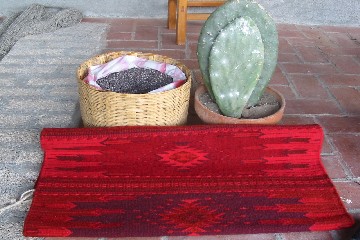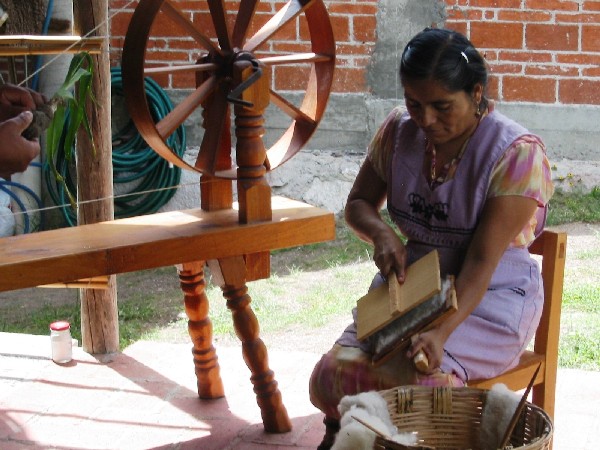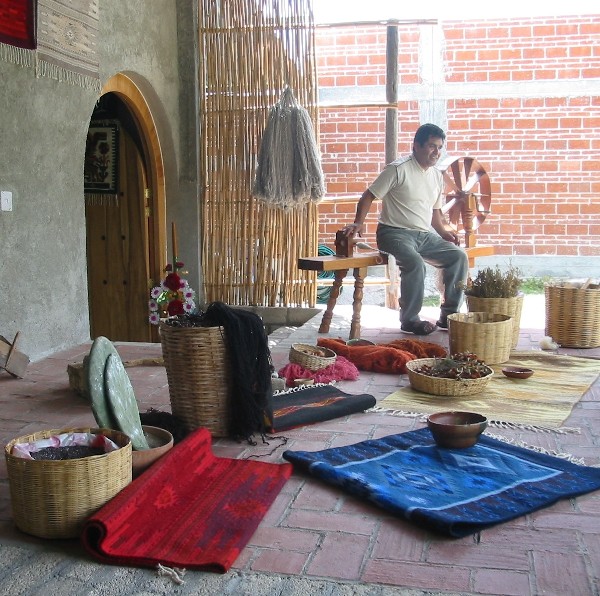Doña Ludi carding wool. Photo: Ibis Alonso
Faustino Ruiz’s family has been weaving wool rugs in Teotitlan del Valle, Oaxaca, for sixteen generations.
His grandfather loaded the rugs onto his burro and sold them in the coldest parts of the mountains, where they kept floors warm. Today, Faustino and his wife, Ludivina, sell their rugs to tourists, who hang them on walls.



